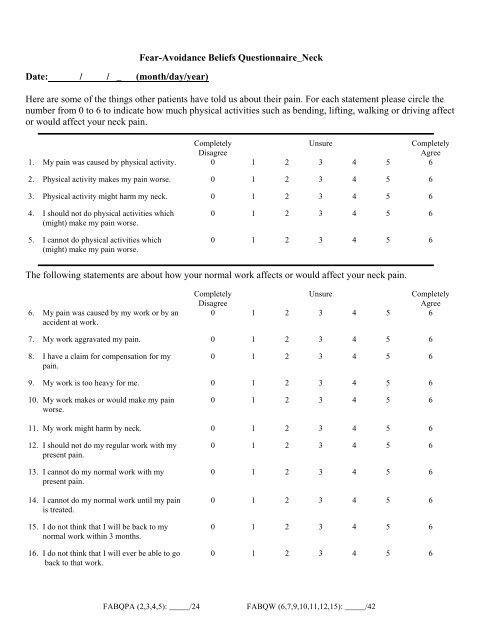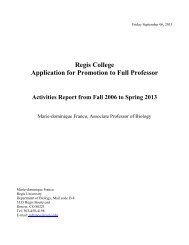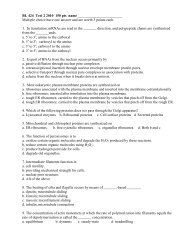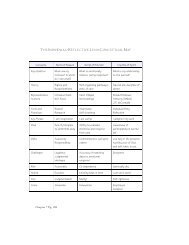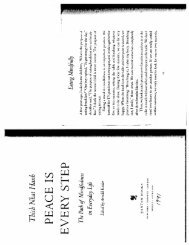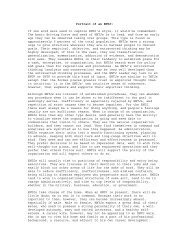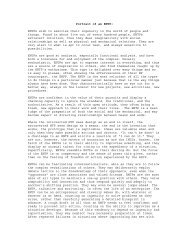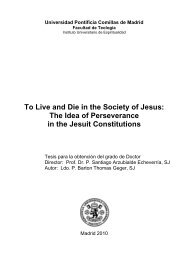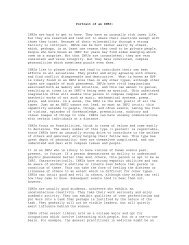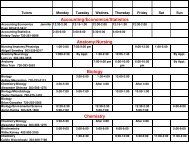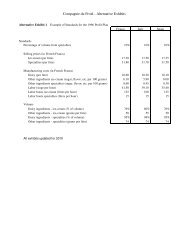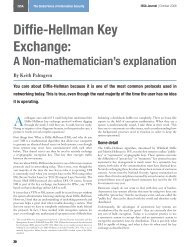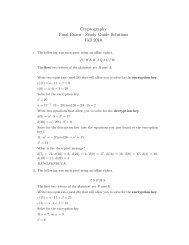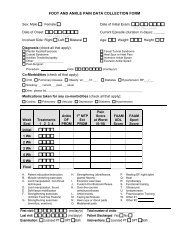FABQ neck - Regis
FABQ neck - Regis
FABQ neck - Regis
You also want an ePaper? Increase the reach of your titles
YUMPU automatically turns print PDFs into web optimized ePapers that Google loves.
Date: / / _ (month/day/year)<br />
Fear-Avoidance Beliefs Questionnaire_Neck<br />
Here are some of the things other patients have told us about their pain. For each statement please circle the<br />
number from 0 to 6 to indicate how much physical activities such as bending, lifting, walking or driving affect<br />
or would affect your <strong>neck</strong> pain.<br />
1. My pain was caused by physical activity.<br />
2. Physical activity makes my pain worse.<br />
3. Physical activity might harm my <strong>neck</strong>.<br />
4. I should not do physical activities which<br />
(might) make my pain worse.<br />
5. I cannot do physical activities which<br />
(might) make my pain worse.<br />
Completely<br />
Unsure Completely<br />
Disagree<br />
Agree<br />
0 1 2 3 4 5 6<br />
0 1 2 3 4 5 6<br />
0 1 2 3 4 5 6<br />
0 1 2 3 4 5 6<br />
0 1 2 3 4 5 6<br />
The following statements are about how your normal work affects or would affect your <strong>neck</strong> pain.<br />
6. My pain was caused by my work or by an<br />
accident at work.<br />
7. My work aggravated my pain.<br />
8. I have a claim for compensation for my<br />
pain.<br />
9. My work is too heavy for me.<br />
10. My work makes or would make my pain<br />
worse.<br />
11. My work might harm by <strong>neck</strong>.<br />
12. I should not do my regular work with my<br />
present pain.<br />
13. I cannot do my normal work with my<br />
present pain.<br />
14. I cannot do my normal work until my pain<br />
is treated.<br />
15. I do not think that I will be back to my<br />
normal work within 3 months.<br />
16. I do not think that I will ever be able to go<br />
back to that work.<br />
Completely<br />
Unsure Completely<br />
Disagree<br />
Agree<br />
0 1 2 3 4 5 6<br />
0 1 2 3 4 5 6<br />
0 1 2 3 4 5 6<br />
0 1 2 3 4 5 6<br />
0 1 2 3 4 5 6<br />
0 1 2 3 4 5 6<br />
0 1 2 3 4 5 6<br />
0 1 2 3 4 5 6<br />
0 1 2 3 4 5 6<br />
0 1 2 3 4 5 6<br />
0 1 2 3 4 5 6<br />
<strong>FABQ</strong>PA (2,3,4,5): _____/24 <strong>FABQ</strong>W (6,7,9,10,11,12,15): _____/42
Facts about the <strong>FABQ</strong><br />
It is based on Lethem et al’s and Troup et al’s work. Their work basically addressed how<br />
different people respond to the fear of pain. There are basically two groups: those that confront<br />
the pain and those that try to avoid pain. Their main focus was that the patient’s beliefs serve as<br />
the driving force for the behavior. Further, Sandstrom & Esbjornson’s work found that one of the<br />
most important statements in patient’s ability to return to work was the following statement: “I<br />
am afraid of starting work again, because I don’t think I will be able to manage” (Sound<br />
familiar?) Changing this attitude is fundamental to success with the fear-avoiding patient.<br />
Waddell et al used this work to develop the <strong>FABQ</strong> (Fear Avoidance Beliefs Questionnaire) to<br />
help clinician predict those that tend to be fear avoiders.<br />
This survey can help predict those patients with low back pain that have a high pain avoidance<br />
behavior. Clinically, these people may need to be supervised more than those that confront their<br />
pain are. For more information: Waddell: The Back Pain Revolution pp. 191-195 and Waddell et<br />
al: A fear avoidance beliefs questionnaire (<strong>FABQ</strong>) and the role of fear avoidance beliefs in<br />
chronic low back pain and disability; Pain. 1993; 52: 157-68.<br />
This form has been modified for patients who have <strong>neck</strong> pain. The psychometric properties for<br />
patients with <strong>neck</strong> pain are unknown.<br />
Scoring the <strong>FABQ</strong><br />
The <strong>FABQ</strong> consists of 2 subscales, which are reflected in the division of the outcome form into 2<br />
separate sections. The first subscale (items 1-5) is the Physical Activity subscale (<strong>FABQ</strong>PA),<br />
and the second subscale (items 6-16) is the Work subscale (<strong>FABQ</strong>W). Although we are only<br />
interested in the <strong>FABQ</strong>W subscale for the purposes of classifying patients, all items should be<br />
completed. Interestingly, not all items contribute to the score for each subscale; however the<br />
patient should still complete all items as these items were included when the reliability and<br />
validity of the scale was initially established. Also note that there is no total score where the each<br />
subscale score is added as each subscale exists as a separate entity. The method to score each<br />
subscale is outlined below. (Note: It is extremely important to ensure all items are completed as<br />
there is no procedure to adjust for incomplete items.)<br />
Scoring the Physical Activity subscale (<strong>FABQ</strong>PA)<br />
1. Sum items 2, 3, 4, and 5 (the score circled by the patient for these items).<br />
2. Record this total on the form.<br />
Scoring the Work subscale (<strong>FABQ</strong>W)<br />
1. Sum items 6, 7, 9, 10, 11, 12, and 15.<br />
2. Record this total on the form.<br />
Waddell et al: <strong>FABQ</strong>; Pain. 1993; 52: 157-68.<br />
<strong>FABQ</strong>PA (2,3,4,5): _____/24 <strong>FABQ</strong>W (6,7,9,10,11,12,15): _____/42


